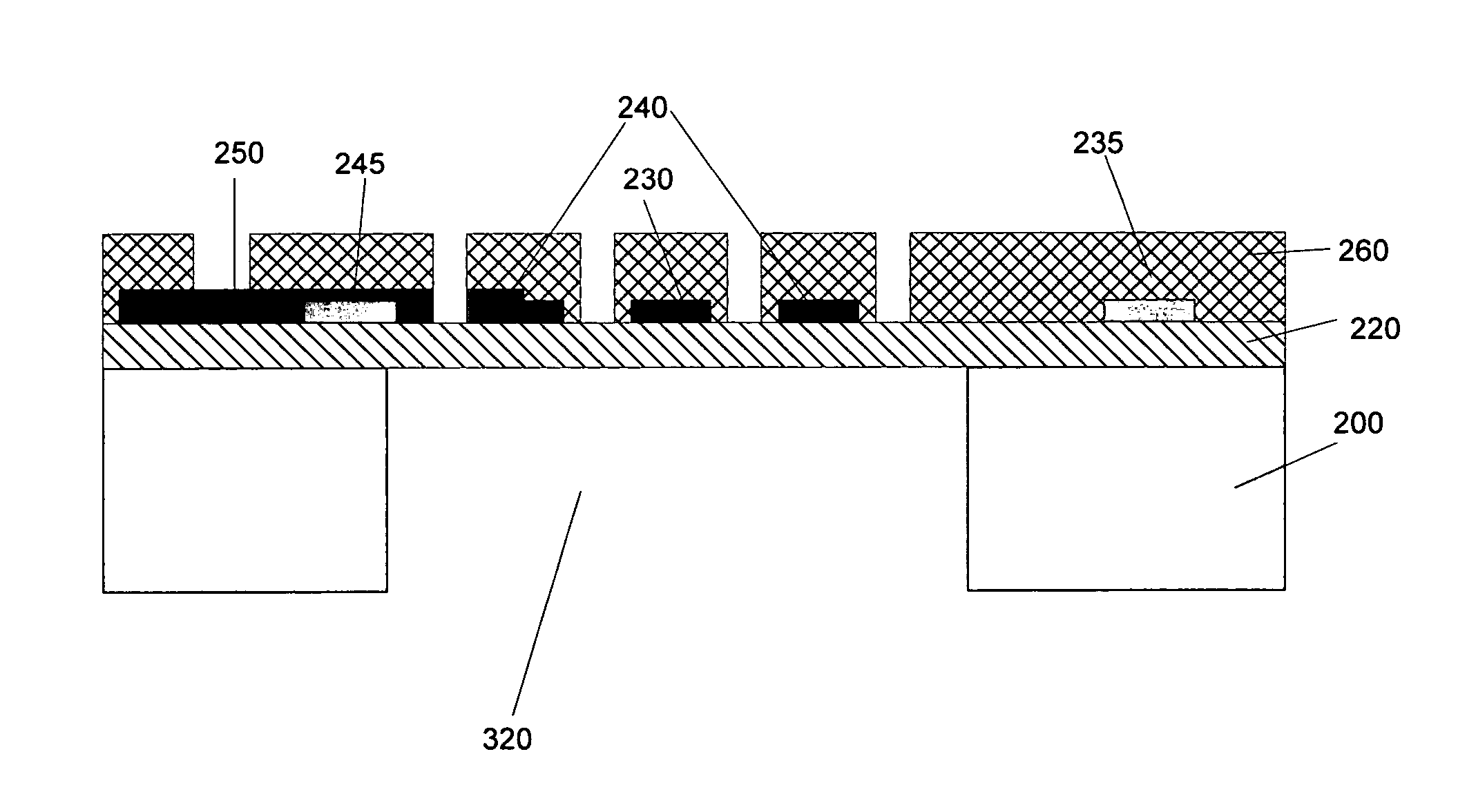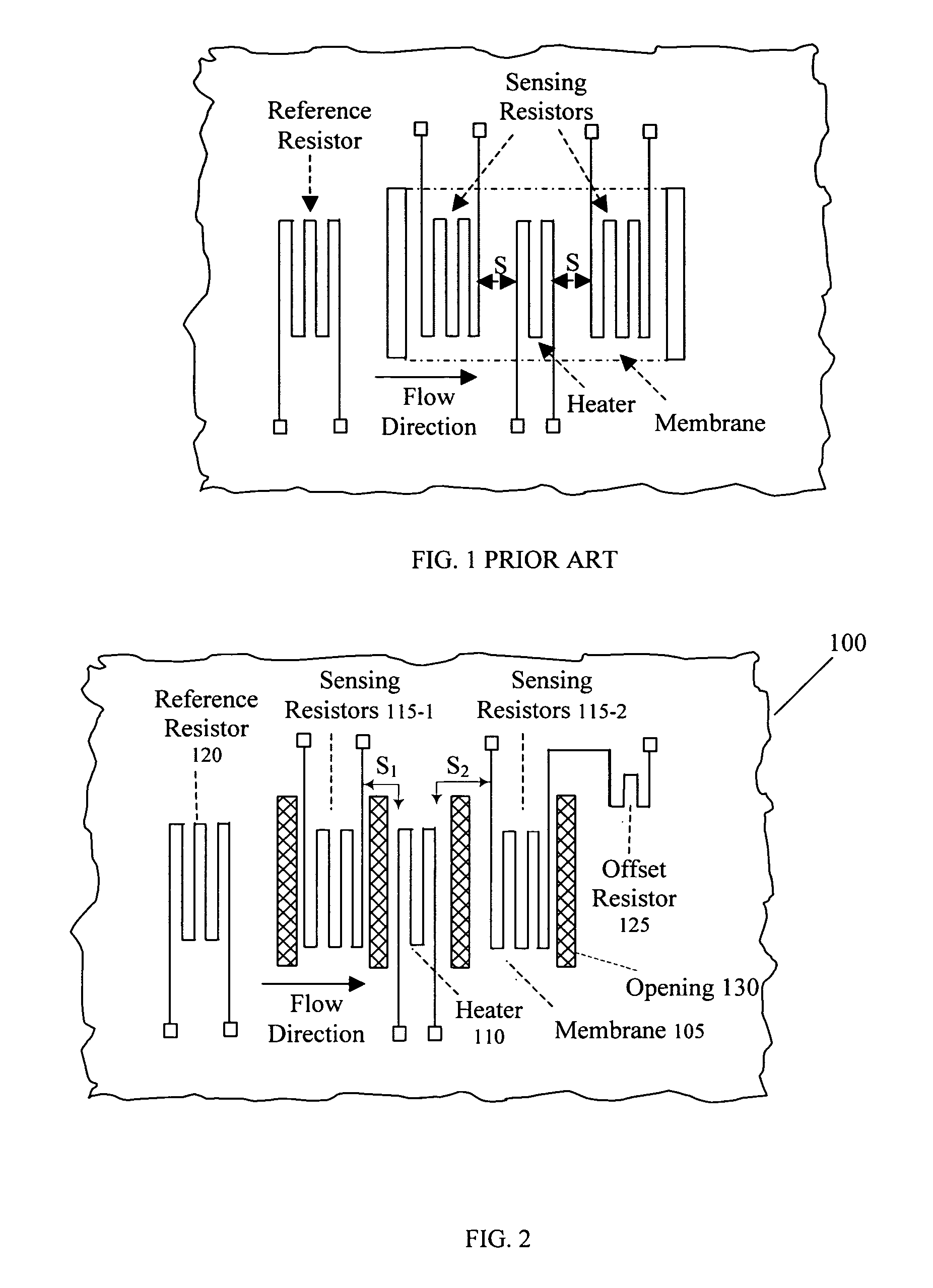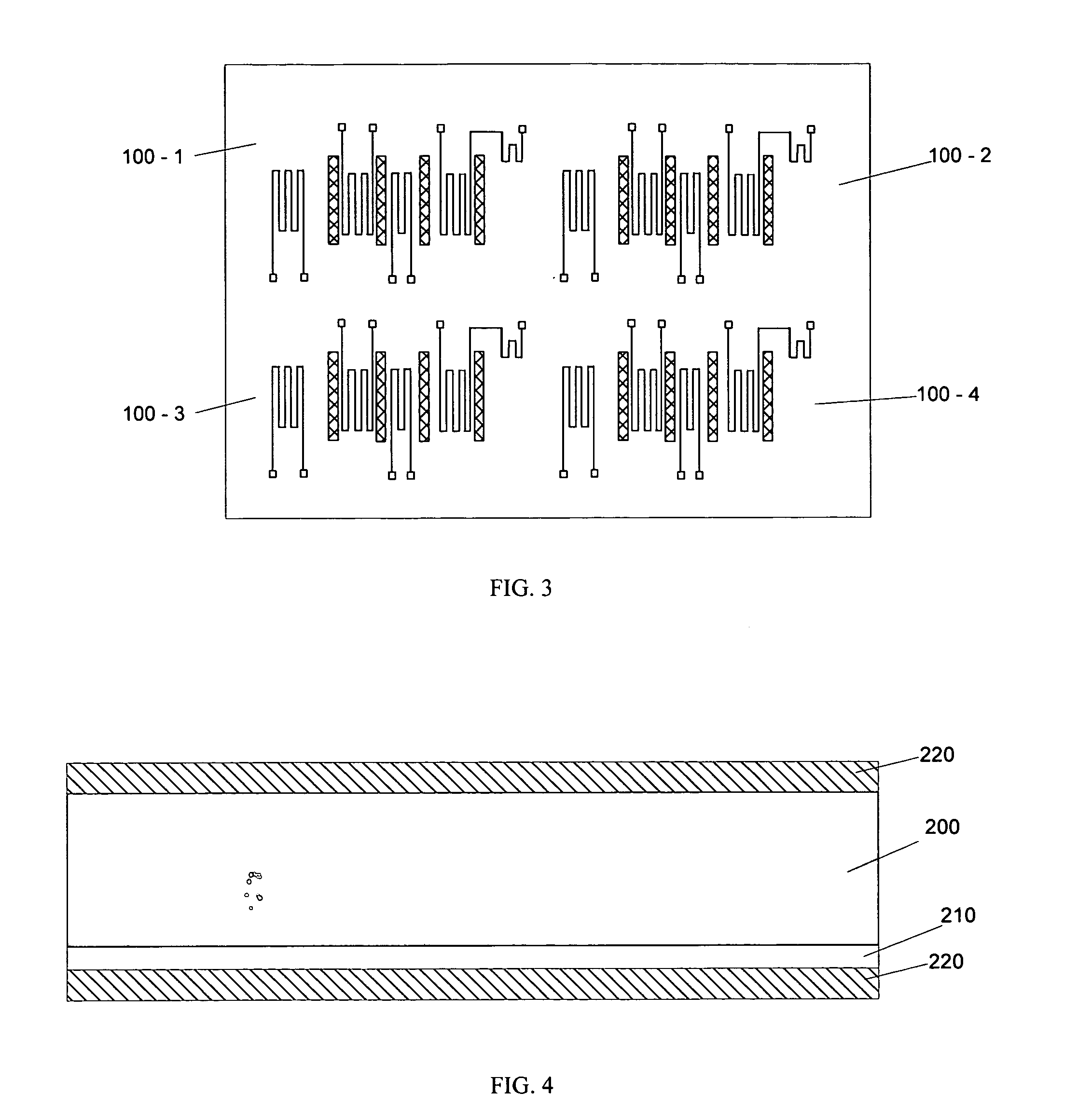Method of manufacturing a flow rate sensor
a flow rate sensor and manufacturing method technology, applied in the direction of liquid/fluent solid measurement, instruments, conductive pattern formation, etc., can solve the problems of temperature variation, limited measurement technique, limited conventional technology of mass flow sensor, etc., and achieve the effect of expanding the dynamic measurement rang
- Summary
- Abstract
- Description
- Claims
- Application Information
AI Technical Summary
Benefits of technology
Problems solved by technology
Method used
Image
Examples
Embodiment Construction
[0036]FIG. 2 shows a top view of a flow rate sensor 100 as a preferred embodiment of the present sensor. The flow rate sensor 100 is supported on a membrane 105 and is manufactured by applying the MEMS manufacturing processes as illustrated below. The flow rate sensor includes a heater 110 and temperature sensing resistors 115-1 and 115-2 disposed on the upstream and downstream of the heater 110. The upstream and downstream sensing resistors may be symmetrical, i.e., resistors of equal resistance, or non-symmetrical resistors, i.e., resistors of different resistances. The upstream and downstream sensing resistors may be arranged to locate at either a symmetrical or non-symmetrical locations. The flow rate sensor further includes a reference resistor 120 that is provided to have a resistance that is at least three times greater than the resistance of the heater 110. The purpose to provide a reference resistor 120 that has greater resistance is to minimize the power dissipation over t...
PUM
| Property | Measurement | Unit |
|---|---|---|
| angle | aaaaa | aaaaa |
| resistance | aaaaa | aaaaa |
| velocities | aaaaa | aaaaa |
Abstract
Description
Claims
Application Information
 Login to View More
Login to View More - R&D
- Intellectual Property
- Life Sciences
- Materials
- Tech Scout
- Unparalleled Data Quality
- Higher Quality Content
- 60% Fewer Hallucinations
Browse by: Latest US Patents, China's latest patents, Technical Efficacy Thesaurus, Application Domain, Technology Topic, Popular Technical Reports.
© 2025 PatSnap. All rights reserved.Legal|Privacy policy|Modern Slavery Act Transparency Statement|Sitemap|About US| Contact US: help@patsnap.com



